Does air pollution threaten children's health?
Children's health is jeopardized by exposure to air pollution. As the most vulnerable among us, children are more susceptible than adults to several significant health effects of air pollution due to a combination of behavioral, environmental, and physiological factors.
The majority component of air pollution we face commonly in Jakarta is PM2.5, a fine minuscule particle with a diameter of fewer than 2.5 micrometers. This particle can easily get deep into our lungs, causing short and long-term disease.
As statement mentioned before, children are more prone to air pollution. According to the WHO report, 1.8 billion children under the age of 15 and 630 million children under the age of 5 on a global scale are exposed to ambient levels of PM2.5 that are above WHO air quality guidelines. Moreover, a global scale database has shown that air pollution claimed 690,000 children's lives in 2019, more than poor sanitation and unsafe drinking water.
Probably, some of you are wondering – How is it possible? How can children be so vulnerable?
Children's bodies are still in the developing stage
Children are especially vulnerable, while their lungs, organs, brains, and neurological system are still maturing. The growth and development of our children are really important for their future. Children's lungs take a while to develop and fully mature. New alveolus keeps developing throughout childhood and into the teenage years. Lung function is known to grow linearly with age and height up until the adolescent growth spurt, which occurs at about 10 years for females and 12 years for males. Meanwhile, the brain develops to its fullest potential up until age five, which by five years it is already 90 percent of the adult brain.
The growing body system is extremely susceptible to harmful effects of pollutants such as PM2.5. Various medical studies have shown that exposure to PM2.5 can impact the development as well as the functioning of neurons. Studies have shown that high PM2.5 exposure can impact our kids regardless of what they eat, drink, and do. The researchers from Vital Strategies found that PM2.5 significantly increases the risk of stunting in children, a well-known indicator of poor child development. The Ministry of Health in Indonesia estimates that stunting affects 36.4% of the country's children under the age of 5. A scientific review in 2019 reported that an increase in ambient and household air pollution exposure was associated with an increase in stunting in children.
Children may experience developmental delays, behavioral issues, ADHD, autism, and, eventually, poor academic performance and learning disabilities in school. A study among United States primary school children revealed that early exposure to PM2.5 has a consistent and long-lasting impact on children's academic abilities in reading, math, and science in the years that follow. Another related study also revealed that exposure to PM2.5 causes very bad effects, such as an IQ drop of up to 6 points, lower lung volume up to 30%, lower lung volume up to 30% lower, and a higher risk of ADHD up to 19%.
Bad air pollution happens in the morning
Children live near the ground, taking in more air and, consequently, more pollutants. They may spend much time outside, playing and doing physical activity in potentially contaminated air. What's more, the children would go to school every day and they would play outside the classroom during break time.
In Indonesia, normally, school starts at 7 AM, the time when PM2.5 reaches peak concentration. It means children should do the school run earlier so they wouldn't be late when arriving at school. A study found that school children were exposed to on average 5x higher concentrations of harmful PM2.5 and NO2 pollution during the journey to their school than when they were at school. The highest concentrations were recorded by children walking along main roads. Air pollution data has shown that it really is bad in the mornings. Yup! Bad morning air pollution is a problem!
The World Health Organization (WHO) recommends a yearly exposure of 5 μg/m3 of PM2.5, which was revised from 10 μg/m3. The daily average exposure is 15 μg/m3 not more than 3 days in a year. Most research we have read saw health issues starting at around 15 μg/m3.
Remember these numbers and the color scale:

Using Nafas sensor, we took a look at what it has looked like in the mornings in different locations.
Here’s Surabaya in June 2022
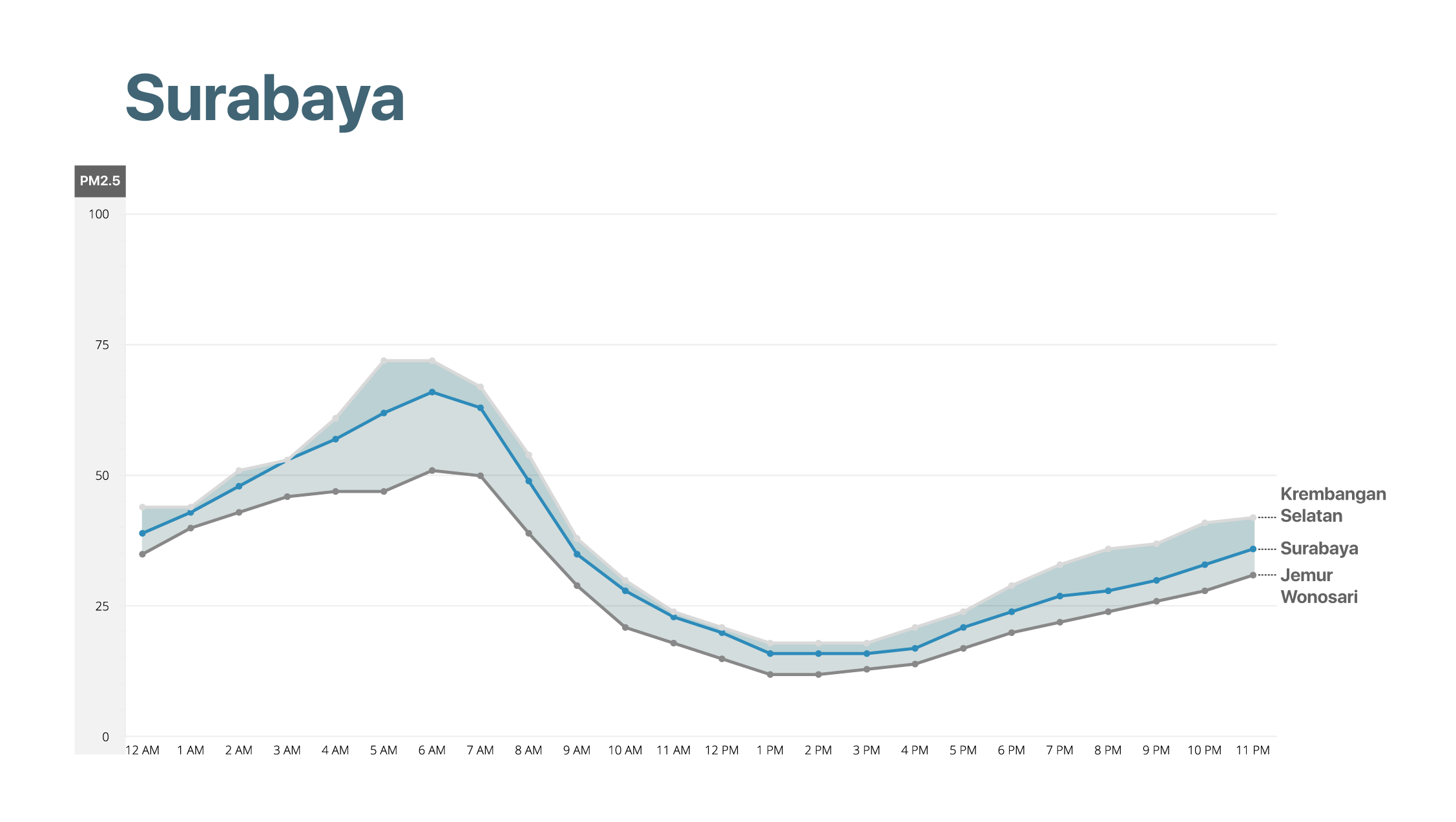
Here’s Bandung in June 2022

Here’s DKI Jakarta in June 2022

Here’s D.I. Yogyakarta in June 2022

Here’s Bekasi in June 2022

Here’s Depok in June 2022
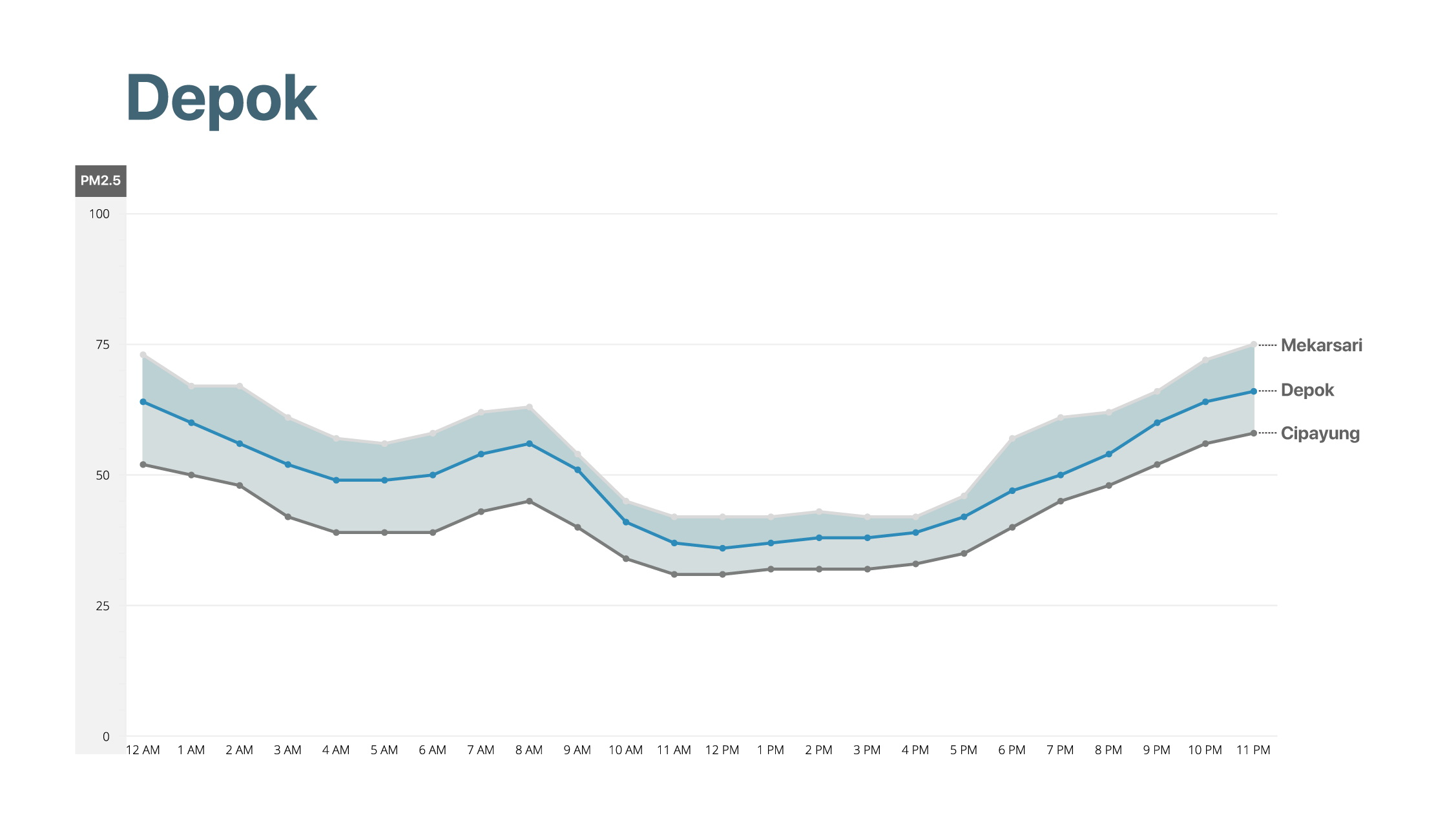
Here’s Bogor in June 2022

Here’s Tangerang in June 2022
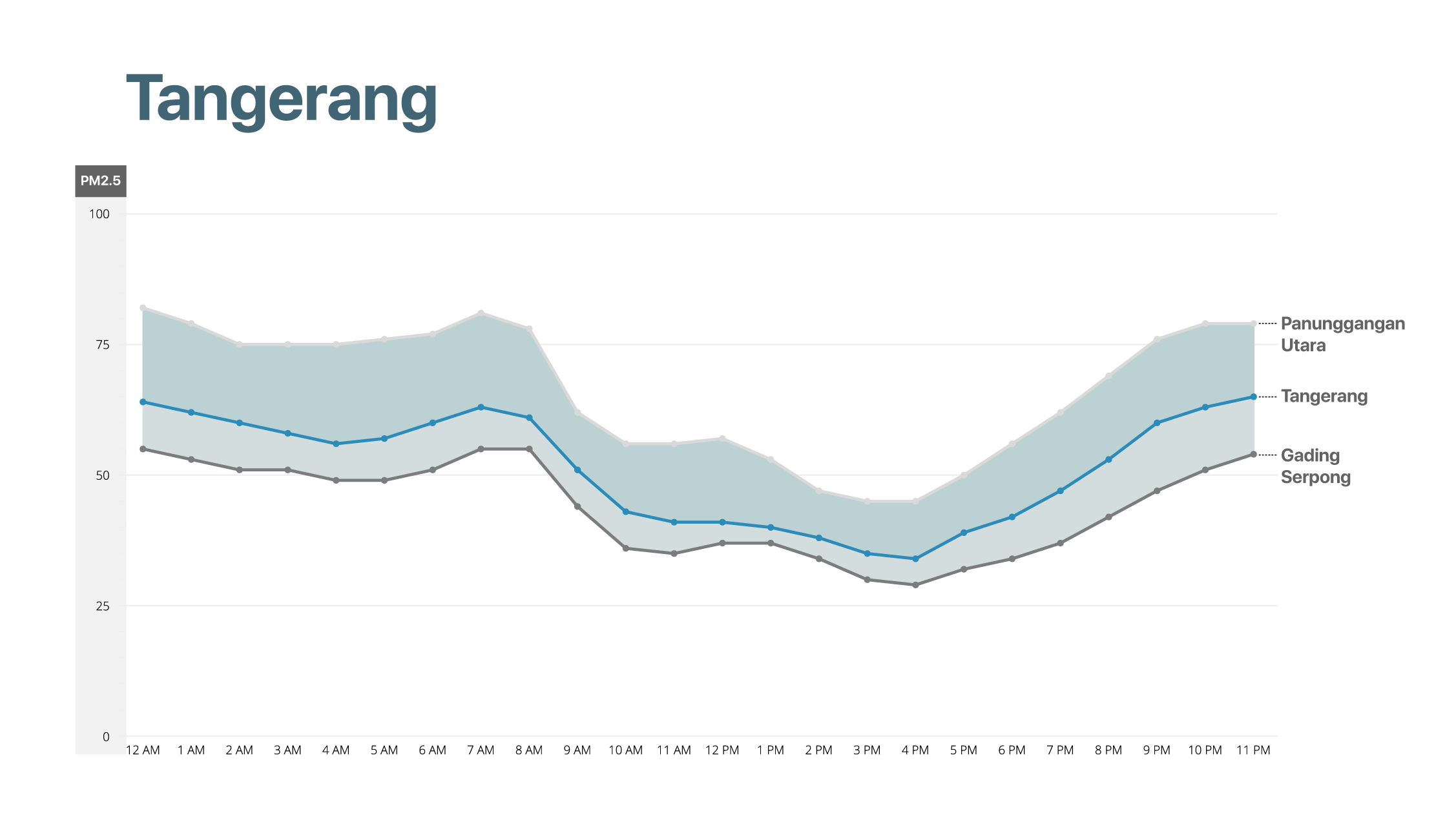
And here’s South Tangerang in June 2022
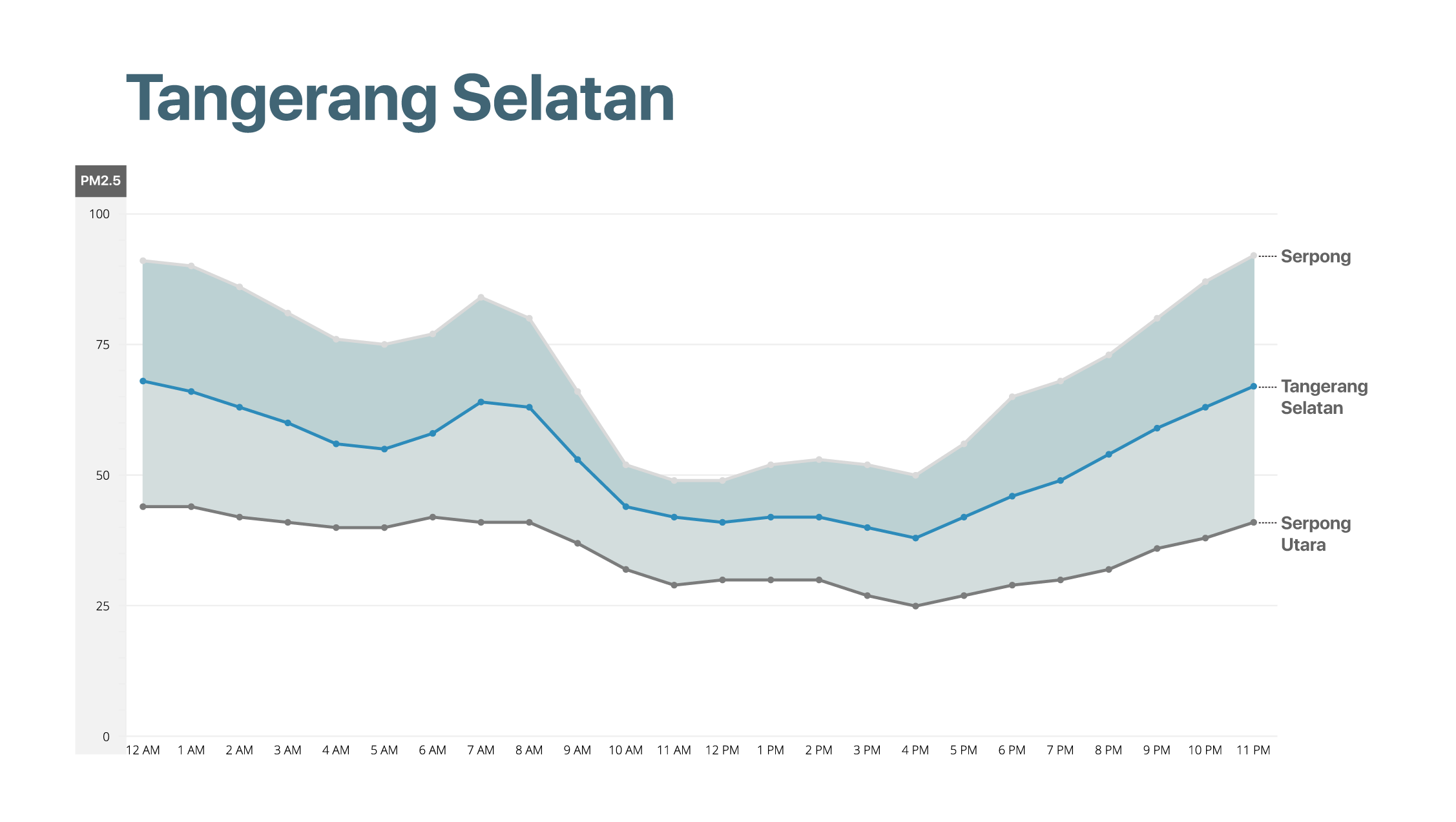
Here's the last 1 year of data from sensors that have been installed in residential neighborhoods – Brawijaya, Kebayoran Baru, Menteng, and Serpong
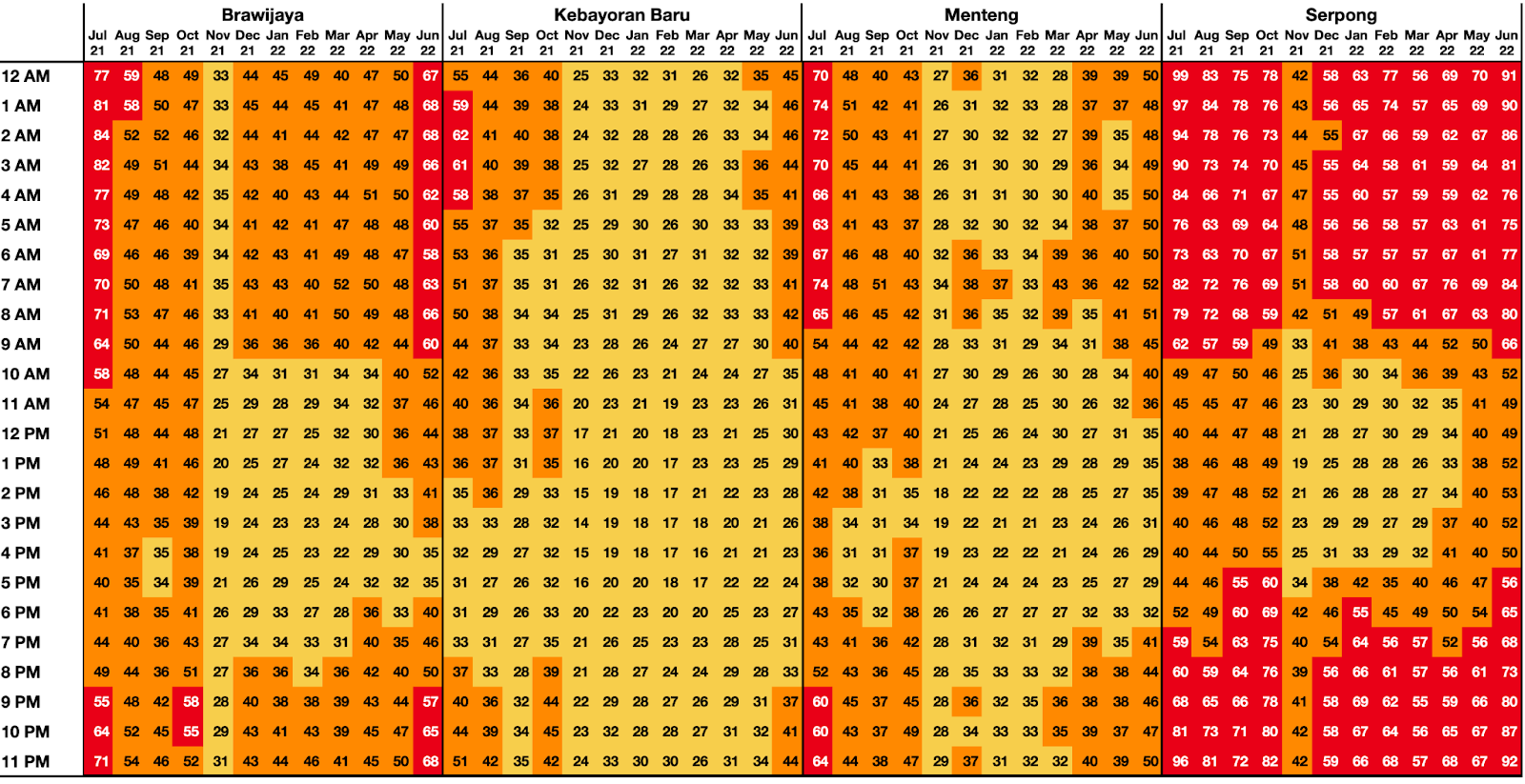
You can see that on average, the morning time has PM2.5 levels that are far above the 15 μg/m3 daily exposure recommendation from the WHO.
Here's the same school in Serpong and Menteng/Brawijaya/Kebayoran Baru in March 2022.
Look at how different the air quality can be from day to day!
Serpong
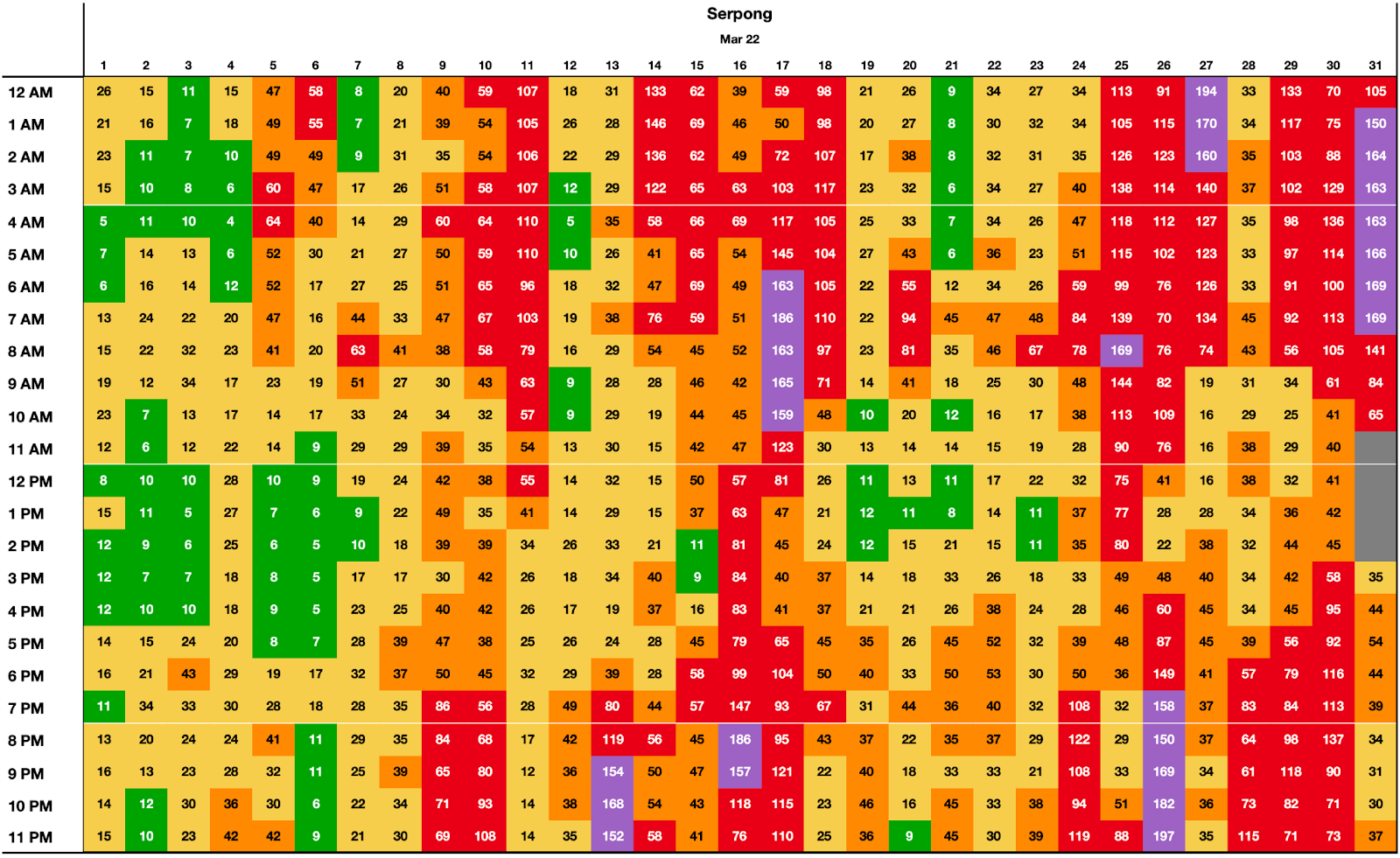
Menteng
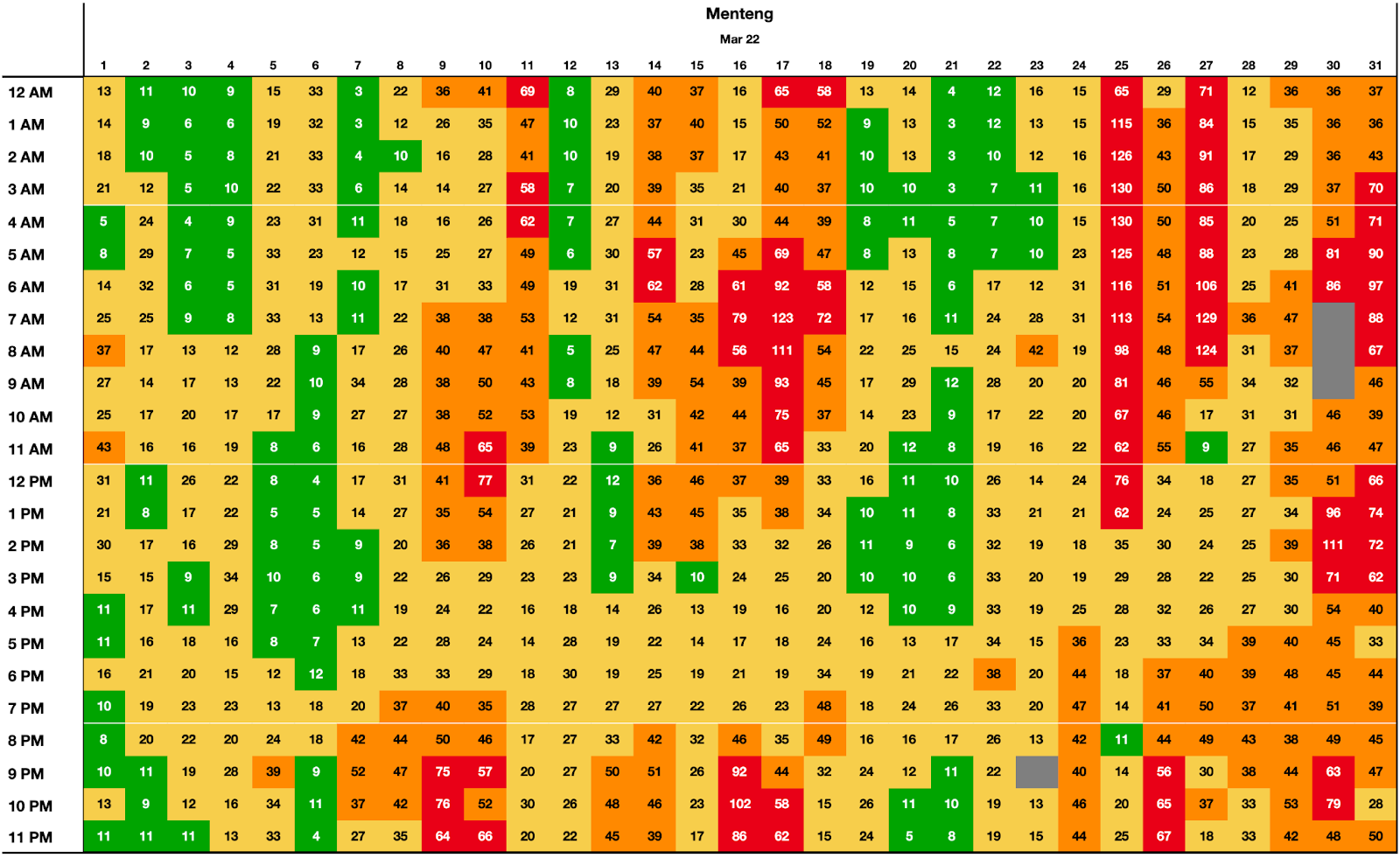
Kebayoran Baru
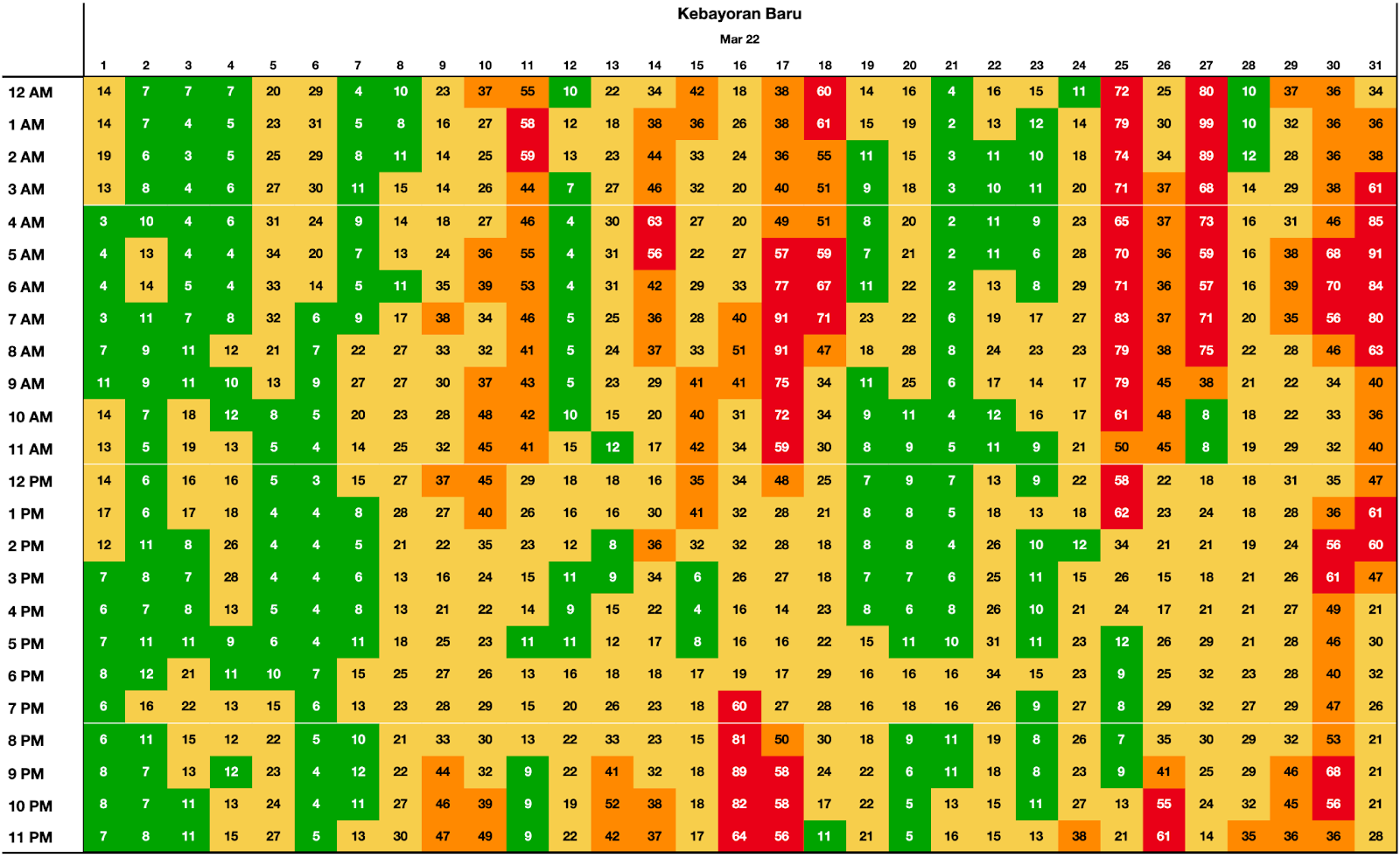
Brawijaya
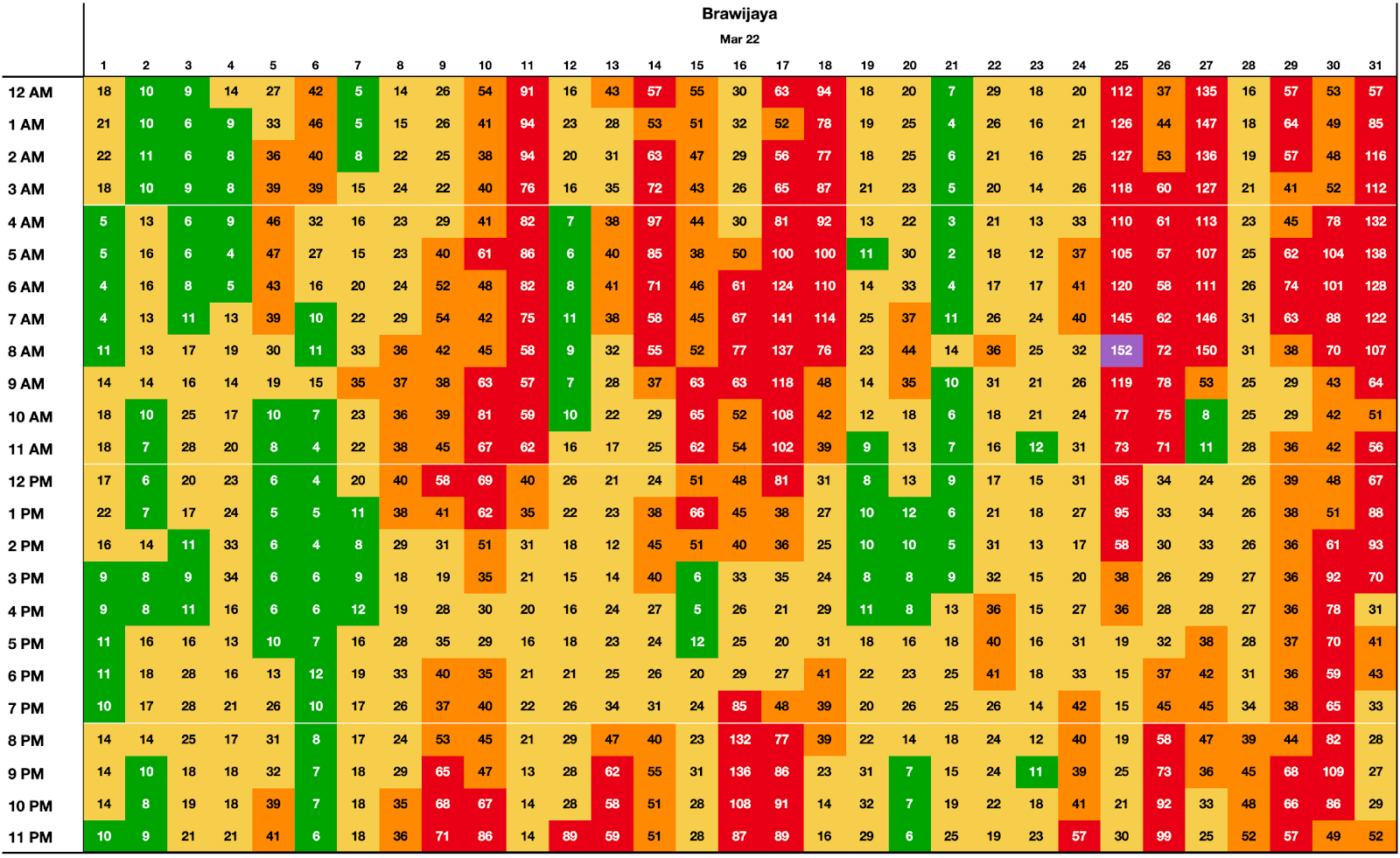
So, what should we do to keep our kids healthy?
Combating air pollution is a bit harder to do on your own, but there are small tips to follow to shield your children. Experts suggest that eating food that is rich in antioxidants can be an inner defense against air pollution exposure. These include all fruits and vegetables, particularly those high in vitamins A and C. To simplify it, we encourage you to keep in mind and follow this formula:

To keep your environment healthy, the first and most important thing you should do every day is to check your air quality before letting the kids out to play. Through the Nafas app, we provide outdoor air quality information that can help you monitor air quality. We have a 'Save as favorite' feature to notify you about air quality in areas that you need to know about. Through this feature, you can get notified about the air condition of the area where your child goes.
Clean and safe indoor air quality is also a prerequisite for ensuring your children’s health. You can consider using a HEPA purifier to optimize indoor air quality so that your child can do indoor developmental activities in a healthier environment.
Want to get started now? Click here to open your Nafas.
References:
Air pollution and child health: prescribing clean air. https://www.who.int/publications/i/item/WHO-CED-PHE-18-01
Children exposed to five times more air pollution on school run. https://www.kcl.ac.uk/news/children-exposed-to-five-times-more-air-pollution-on-school-run
Grineski, S. E., Collins, T. W., & Adkins, D. E. (2020). Hazardous air pollutants are associated with worse performance in reading, math, and science among US primary schoolchildren. Environmental Research, 181, 108925. https://doi.org/10.1016/j.envres.2019.108925
Neve, V., Girard, F., Flahault, A., & Boule, M. (2002). Lung and thorax development during adolescence: relationship with pubertal status. European Respiratory Journal, 20(5), 1292–1298. https://doi.org/10.1183/09031936.02.00208102
Mullen, C., Grineski, S. E., Collins, T. W., & Mendoza, D. L. (2020). Effects of PM2.5 on Third Grade Students’ Proficiency in Math and English Language Arts. International Journal of Environmental Research and Public Health, 17(18), 6931. https://doi.org/10.3390/ijerph17186931
V., Pun, S., Mehta, & R., Dowling. (2019). Air pollution and child stunting – a systematic review and meta-analysis. Environmental Epidemiology, 3, 318. https://doi.org/10.1097/01.ee9.0000609484.16985.4a
Wellness, H. &, Diseases, L. H. and, & Science. An Amazing Journey: How Young Lungs Develop. https://www.lung.org/blog/how-young-lungs-develop